Green Board vs. Cement Board – How Do They Compare?

Although drywall is commonly used in construction, not all of it is made the same. Traditional drywall is tough unless exposed to water, and excessive humidity can cause it to buckle from the inside out.
Builders also have other options, such as green boards and cement boards. They are intended for use in wet areas of the home, such as bathrooms and basements.
This article will compare the two boards and help you decide which is the best fit for your needs.
Overview of Green Board vs. Cement Board
Green board is the common name for drywall that has been specially treated to be resistant to water. Drywall is made of a gypsum slurry that is covered with paper. As a result, it can last a long time in many places.
Green board, however, is distinct due to its extra thick paper coating and water-resistant wax layer. Since it is water-resistant, it can be used as a tile subfloor in wet areas like bathrooms and kitchens.
Green boards come in various sizes, the most common of which is 4 feet by 8 feet. It is, therefore, more costly than standard drywall.
On the other hand, the cement board is made of a cement slurry that is strengthened with fiberglass mesh. That makes it very hard and long-lasting. Because of this, the panel is not only extremely water-resistant but also very dense.
Since it is made entirely of inorganic materials, the cement board is resistant to water, rotting, and general wear and tear.
It can also withstand a lot of force and hold weight without breaking. Even though it is expensive and hard to install, cement board is often used as the base for tiles in wet places like bathrooms and kitchens.
Cement boards usually come in 3′ x 5′ sizes, but they might also come in other sizes.
Quick Facts Comparison Table
Cement Boards |
Green Boards |
Cement boards comprise cement and glass fibers. |
Green boards or blue boards are types of drywall (gypsum pressed between two sheets of paper). |
Cement boards are more impact-resistant and durable. |
Green boards, made from gypsum, are less durable. |
Cement boards are available in water-resistant and waterproof types. |
Green boards are only water-resistant due to their gypsum nature and cannot be waterproof. |
Cement boards are best used outdoors as siding or in wet areas inside the house, such as bathrooms and kitchens. |
Green boards are water-resistant, hence ideal for damp applications, such as basements. |
Cement boards are more expensive and can cost twice as much as green boards. |
Green board is more expensive than standard drywall, but it’s still less expensive than cement board. |
Cement boards are heavier than green boards, making installation difficult. |
Key Differences Between Green Board vs. Cement Board

Composition
The composition of these two materials is entirely different. Green board is a drywall constructed from gypsum and an extra-thick paper layer treated with water-resistant wax.
On the other hand, cement boards consist of a cement slurry that has been strengthened with fiberglass mesh.
Functionality
Green board requires only a utility knife for cutting and regular drywall screws for mounting, making it the simpler of the two materials to work with.
The cement board requires a power saw fitted with a masonry-cutting blade. When installing it, you’ll also need special screws and nails. Both can be installed with a little DIY know-how, but cement board is more of a challenge.
Mold and Water Resistance
The green board has been engineered to withstand extreme dampness. The outer layer of wax is good at keeping water away, so the drywall doesn’t soak up too much moisture. However, this isn’t foolproof, as the green board only has so much resistance to moisture.
It can soak up some moisture, which poses a threat to the green board’s structural integrity. Because of this, this kind of drywall is also a little more likely to grow mold over time.
On the other hand, cement boards are almost completely waterproof because they are made of cement. That makes it very impervious to rot, insects, and deterioration from dampness. Its resistance to moisture makes it the superior choice.
Key Features of a Green Board
Drywall made from green board is resistant to water but not waterproof. The front and back paper facings are a distinctive color, hence the name. Green board drywall has a gypsum core that is thicker and stronger than regular drywall.
That makes it good for rooms with indirect moisture, like bathrooms and laundry rooms. Water still limits how the green board can be used since the paper and gypsum will soak moisture if placed directly on the surface.
Advantages of a Green Board
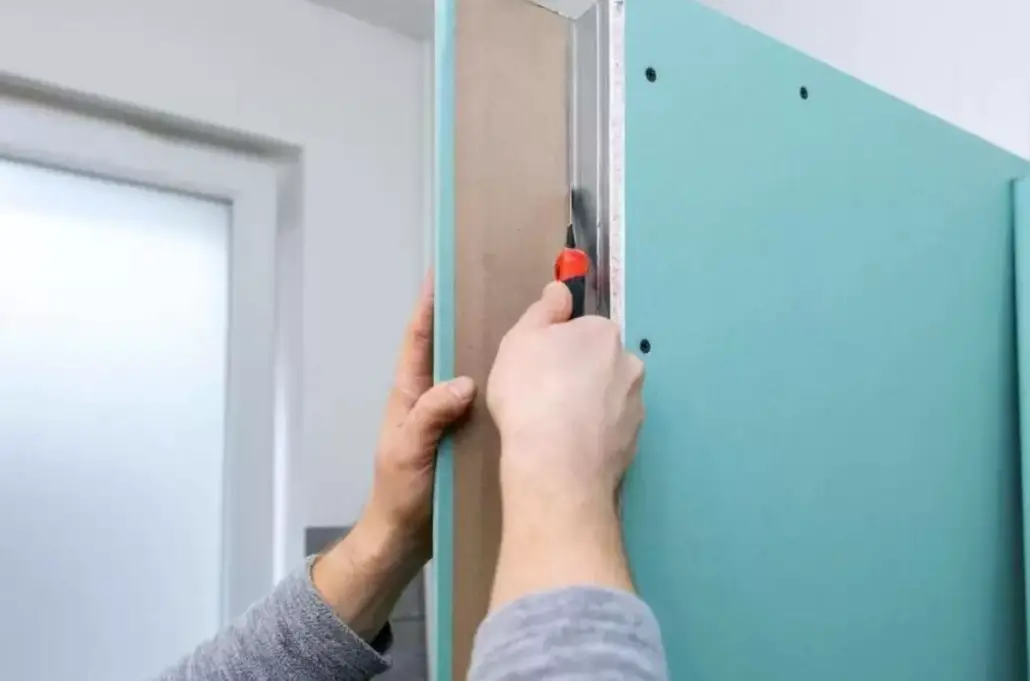
- Easy installation
Since you already know that green boards are just modified drywall panels, they are just as easy to assemble as drywall. You can install the panels independently for smaller spaces, such as a standard room. This process is simplified even further when the studs are already in place (as when installing green boards over existing drywall).
- Durability
The green board is better than drywall because the panels are thicker and have more layers. Some choices, however, have an even longer lifespan.
- Moisture resistance
Leaving a drywall tile backing in a humid environment will deteriorate it and foster mold growth. Since green boards can hold some water, they are a good choice for homes in humid areas.
Disadvantages of a Green Board
- They are not waterproof
- Despite widespread use, green boards are not ideal for installation in areas that come into contact with water, such as bathrooms.
- Installing a green board too close to a water source, such as a sink or stove, can also cause it to rot.
Key Features of a Cement Board
Cement board, also called backer board, is impervious to water and can withstand splashes and leaks.
The term “backer board” refers to the material used as a base when tiling a wall or floor. The term was first used to describe how the material worked in wet places like bathrooms.
Because cement and concrete are used to make the core of these boards, they won’t rot or break down even if they get wet. A cement board is great for supporting tiles because mortar and grout can seep through and into the subfloor without damaging the board.
Advantages of a Cement Board
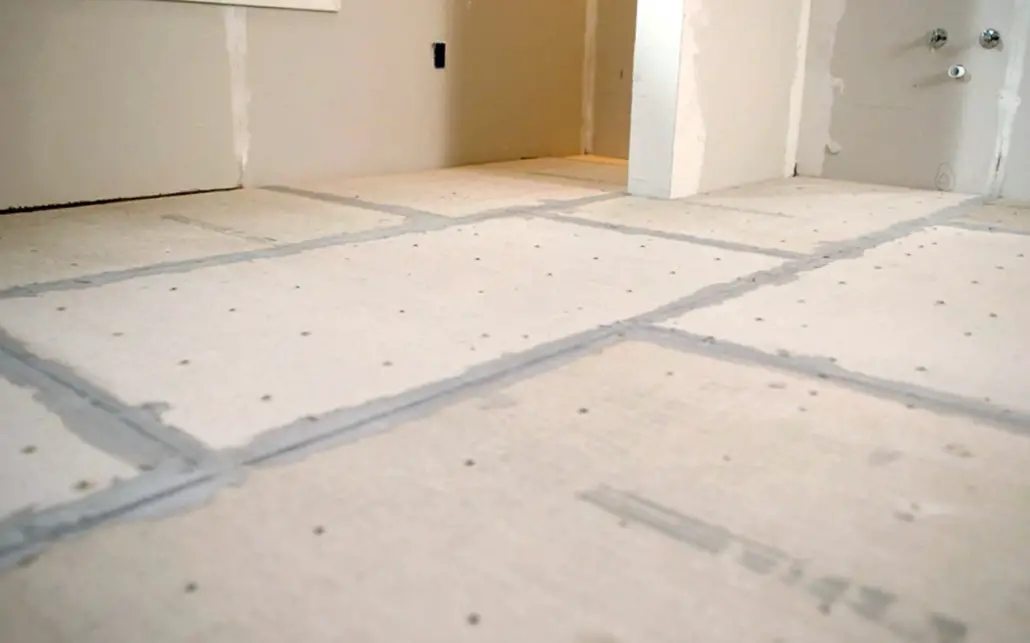
- Cement boards are more durable than gypsum panels and even covered kinds like green boards. The fact that cement board is resistant to mildew and mold also plays a role.
- Green boards are more water-resistant than cement-backed boards, but neither is completely waterproof. Also, many cement boards are completely waterproof, which makes them a better choice than green boards in areas where water is a problem.
Disadvantages of a Cement Board
- Cement backer boards need precise cutting throughout the entire board, making them more complex.
- Cement boards are more difficult to install because of their weight. That necessitates having someone to assist with the setup. The cost-effectiveness factor takes a hit if you need to bring on a couple of extra hands.
- The fully waterproof cement boards are more expensive than regular green boards. This cost per panel becomes more glaring as production increases. It is, therefore, recommended to use only hybrid installations to reduce the cost.
How Do They Compare in Price?
Green boards are more expensive than standard drywall, but they’re still less expensive than cement boards, which can cost twice as much.
How Do They Compare on Durability?
A distinction between the two is that the green board is neither weak nor strong. However, stomping on a green board item would break it in half. Not only is it easily damaged by even mild impacts, but it also has a low weight capacity.
That is different from cement board, which is extremely dense, hard, and long-lasting. It can withstand considerably more force before cracking. Additionally, it can support more weight than a green board.
How Do They Compare on Overall Quality?
A cement board is usually better than a green board because it can handle water better. Even though the green board is highly water-resistant, small amounts of water, like those found in puddles or splashes, can still damage it.
Green Board or Cement Board for Bathrooms?
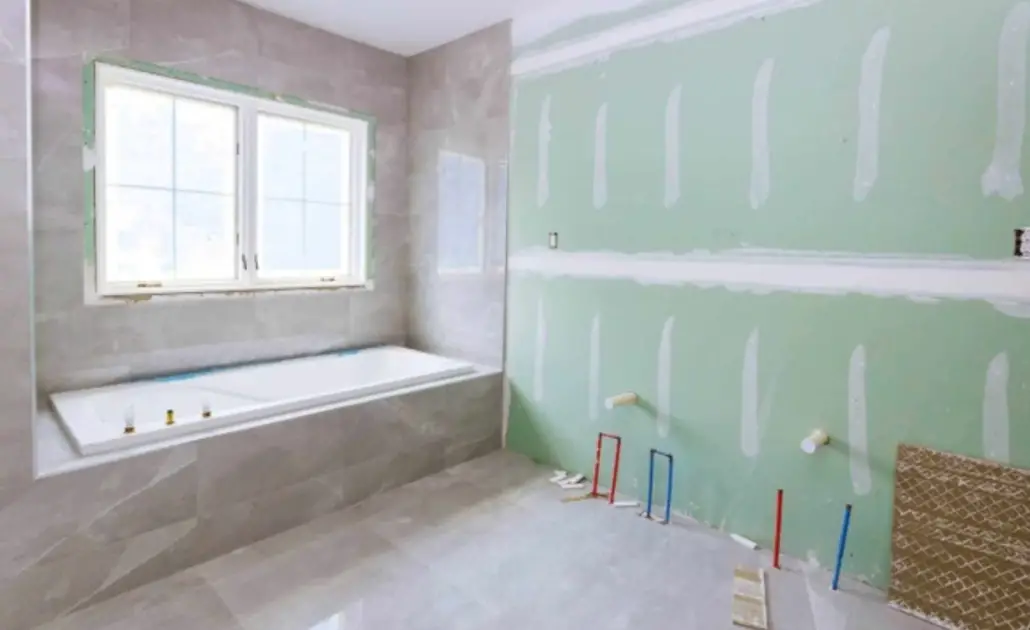
Professionals face a choice when enclosing the walls during construction or remodeling. The high humidity in bathrooms is known to damage regular wallboard, but the other options also have their challenges.
Comparing longevity, price, and setup time are essential for making the right decision.
Green Board or Cement Board for Shower Walls?
Greenboard and other water-resistant drywall panels should be limited to high-humidity regions. Cement backer boards are best for areas with a lot of water, like shower stalls.
Green boards and other water-resistant drywall panels should be used in areas with a lot of humidity. Remember, the paper facing of the green board does not suppress mold growth.
What Is Better Than the Green Board?
Purple drywall is mold and moisture-resistant, making it an excellent option for bathroom usage. However, exposure to water is far more forgiving than a green board.
For instance, you can use purple drywall for a shower’s ceiling or upper walls. The primary distinction between green boards and purple drywall is mold and mildew resistance. Upgrade to purple drywall if you have concerns about mold growth.
Green Board vs. Purple Board
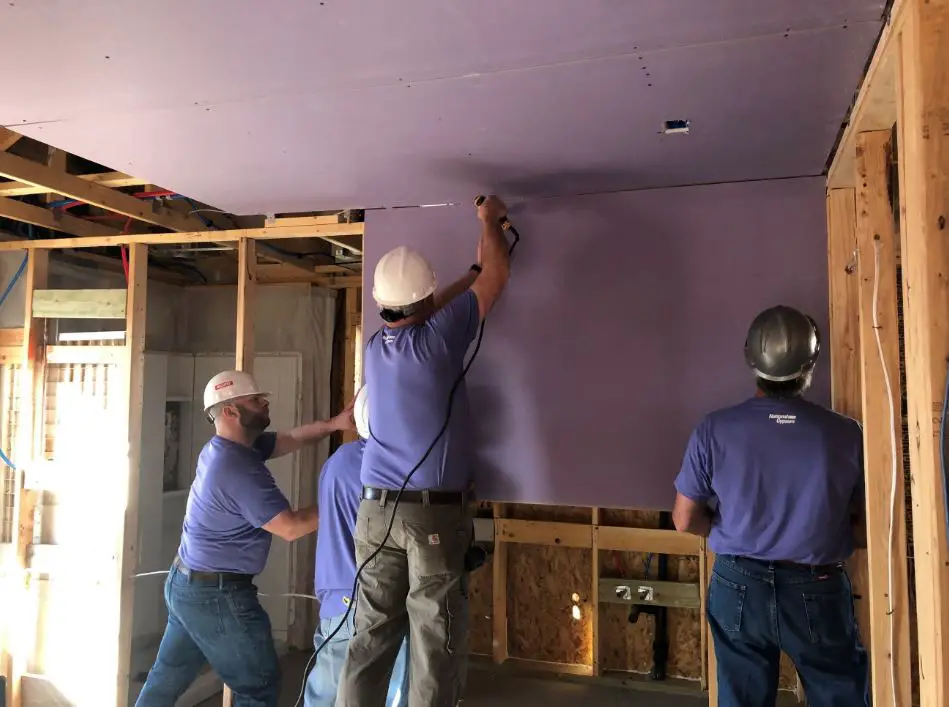
The benefits of using purple drywall, such as a high fire rating, are the same as conventional drywall. However, it surpasses that by also being resistant to humidity and mold.
Some forms of purple drywall are resistant to mold, dings, scratches, and scuffs. The same purple boards can also create soundproof drywall.
Purple and green boards, both types of drywall, are resistant to water. Purple board drywall is unique in that it is also mildew- and mold-resistant. It’s also resistant to dings, scratches, and scrapes. More advantages exist than with green board drywall.
Cement Board vs. Gypsum Board
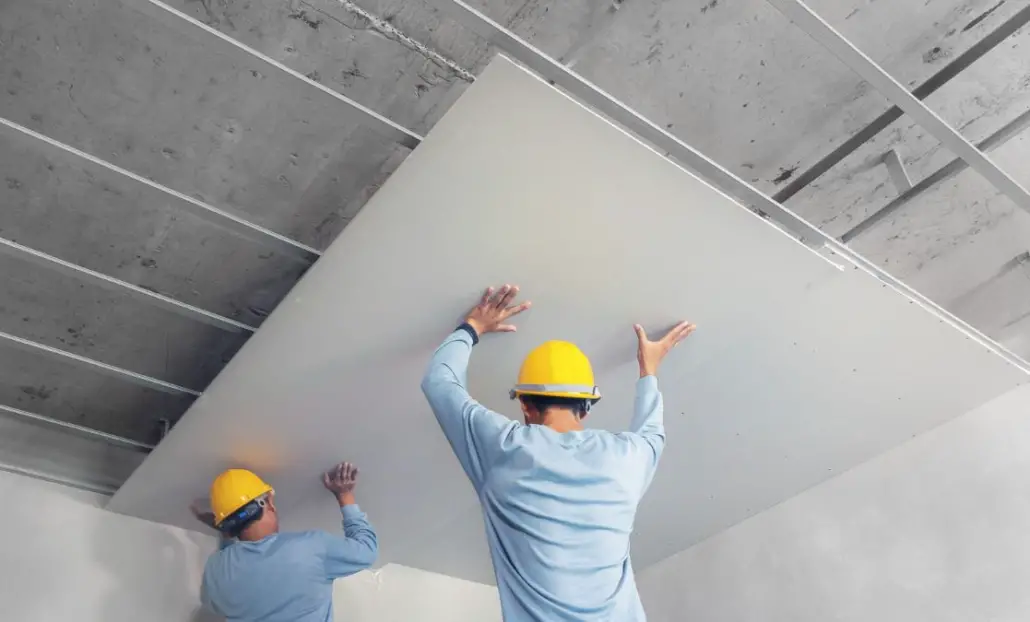
Due to their vastly different compositions and applications, there is no fair comparison between the fiber cement board and gypsum board. You should select a board that meets your needs and is convenient for you to travel to.
Which Board Is the Best for Waterproofing?
Gypsum board is the ideal option. It is coated with silicone to make it water-resistant, and both sides are reinforced with fiberglass mats. Compared to cement board, it is easier to shape and doesn’t grow mold. It also has an in-built moisture barrier.
Can You Use the Green Board in a Shower?
Even though you can’t use a green board as a backer for tile in a shower or tub surround, you can still put it to good use in bathrooms and elsewhere. It’s appropriate for usage in low-water-exposure regions and locations with intermittently high humidity (bathrooms).
Can You Hang the Tile on the Green Board?
Green board is not ideal for use in a wet environment, such as a shower. Fitting the green board in this kind of setting presents the same problems as regular drywall. Problems with the green board include loose tiles, mold growth, and rotted wall studs due to moisture buildup.
What Is the Best Material to Use Behind Shower Walls?
The tile backer is the most common and best substrate used in showers, also called cement board or cement backer board.
Is the Cement Board Ruined if It Gets Wet?
If your cement board becomes wet, it may be partially ruined. Long-term wetness can weaken the bonds between the cement and the fiberboard, causing warping and other types of deformation.
Do You Need to Waterproof the Green Board?
While it is not completely waterproof, the green board has high water resistance. Green board is ideal for damp environments like bathrooms, but you shouldn’t use it behind tiles in a shower or anywhere else it might get wet.
What Happens if You Don’t Waterproof the Cement Board?
The cement board, once installed, provides water resistance but is not waterproof. Therefore, applying a waterproof coating to the cement board is necessary. Failure to waterproof it will lead to the growth of molds.
Conclusion
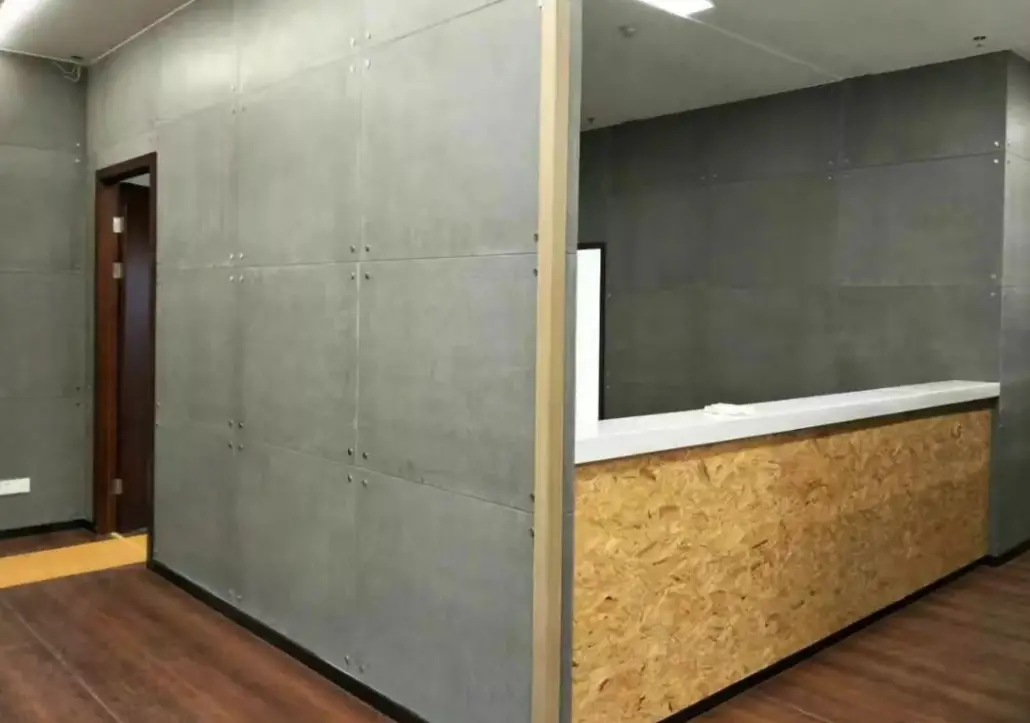
When it comes to how useful they are in places with a lot of water, cement boards are better than green boards. They are more cost-effective in the long run and dry faster, so there is less water damage, even if there is a spill.
There are also completely waterproof options, though they are more expensive in the long run. With this information at your disposal, making an informed decision should be simple.


